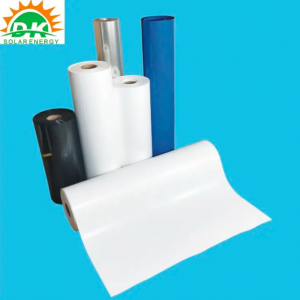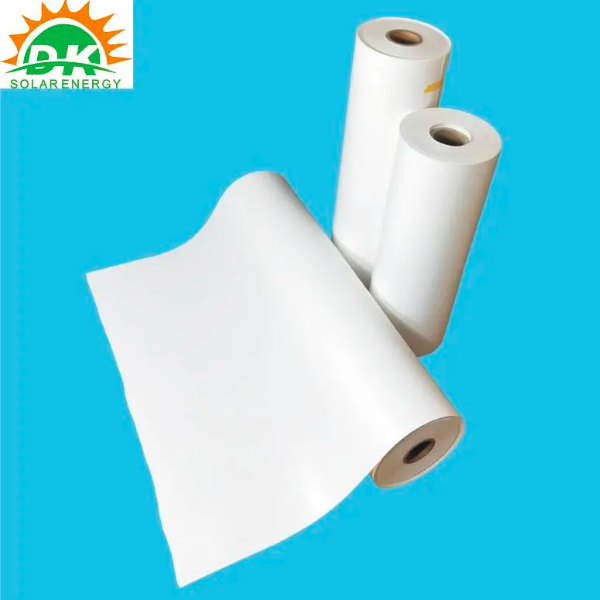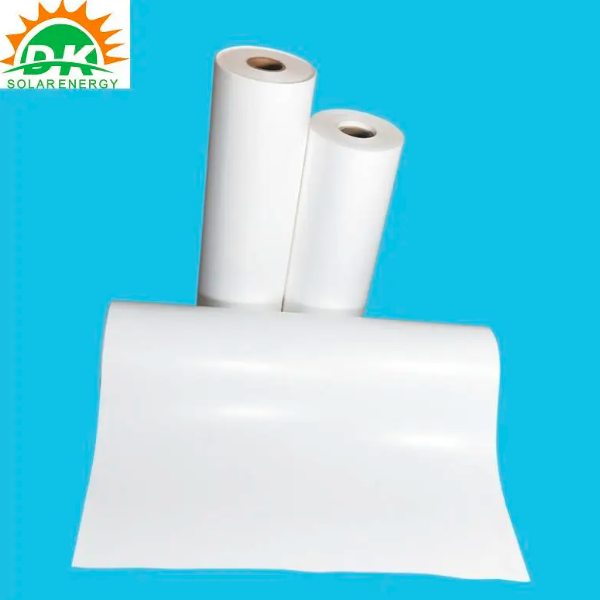The growing demand for renewable energy solutions is paving the way for the widespread adoption of solar energy. One of the key components that plays an important role in improving the efficiency and durability of solar panels is the solar backsheet. In this blog, we will explore the properties and applications of solar backsheets, emphasizing their importance in the solar industry.
What is a solar backsheet?
The solar backsheet is the protective layer on the back of the solar panel. It acts as a protective barrier, protecting photovoltaic (PV) cells from external environmental factors such as moisture, humidity, temperature fluctuations, and ultraviolet radiation. This solid layer acts as an electrical insulator, preventing electric shock and leakage currents. Solar backsheets are primarily made of polymer composites, usually consisting of multiple layers to ensure optimum performance.
Features of solar back panels:
1. Weather resistance: Solar backsheets are engineered to withstand extreme weather conditions, including rain, hail, snow and high wind speeds. They are designed to provide long-term protection against moisture intrusion, ensuring that photovoltaic cells remain intact and functional.
2. UV stability: The main purpose of the solar backsheet is to protect the photovoltaic cells from harmful UV radiation. It acts as a UV stabilizer, minimizing cellular degradation over time. This feature extends the life of the panel and helps maintain its efficiency throughout its lifetime.
3. Electrical insulation: As a key safety component, the solar backplane has high electrical insulation. This insulating layer prevents electric shock, eliminates leakage currents, and prevents fire hazards, ensuring the overall safety of the solar panel system.
4. Thermal conductivity: The solar backsheet is designed to dissipate heat efficiently. By reducing the operating temperature of the photovoltaic cells, the solar backsheet helps maintain a higher energy conversion efficiency even during prolonged exposure to sunlight.
Application of solar backplane:
1. Utility-scale solar power plants: Solar backplane technology is widely used in large-scale solar installations due to its proven ability to withstand harsh environmental conditions. Their durability and reliability make them critical components in utility-scale solar power plants where long-lasting performance is critical.
2. Residential solar systems: Solar backplane technology is equally important for residential solar installations. By protecting photovoltaic cells from external elements, solar backsheets ensure optimal energy production, increasing the homeowner's return on investment. In addition, excellent insulation properties contribute to the safety of residential solar power systems.
3. Commercial and Industrial Solar Projects: From warehouses to factories and office buildings, commercial and industrial buildings can greatly benefit from installing solar panels. Solar backsheet technology adds an extra layer of protection that maintains the performance of the panels and extends their life in harsh environments.
in conclusion:
Solar backsheet technology plays a key role in ensuring the long-term efficiency, durability and safety of solar panels. Solar backsheets have become an indispensable component in solar power generation systems due to their excellent weather resistance, UV stability, electrical insulation, and thermal conductivity. Whether it is a utility-scale solar power plant or a residential installation, solar back panels help optimize power production and minimize maintenance requirements. As the solar industry continues to evolve, advances in solar backsheet technology will undoubtedly lead to higher performance and longer life solar systems.
Post time: Jul-14-2023



